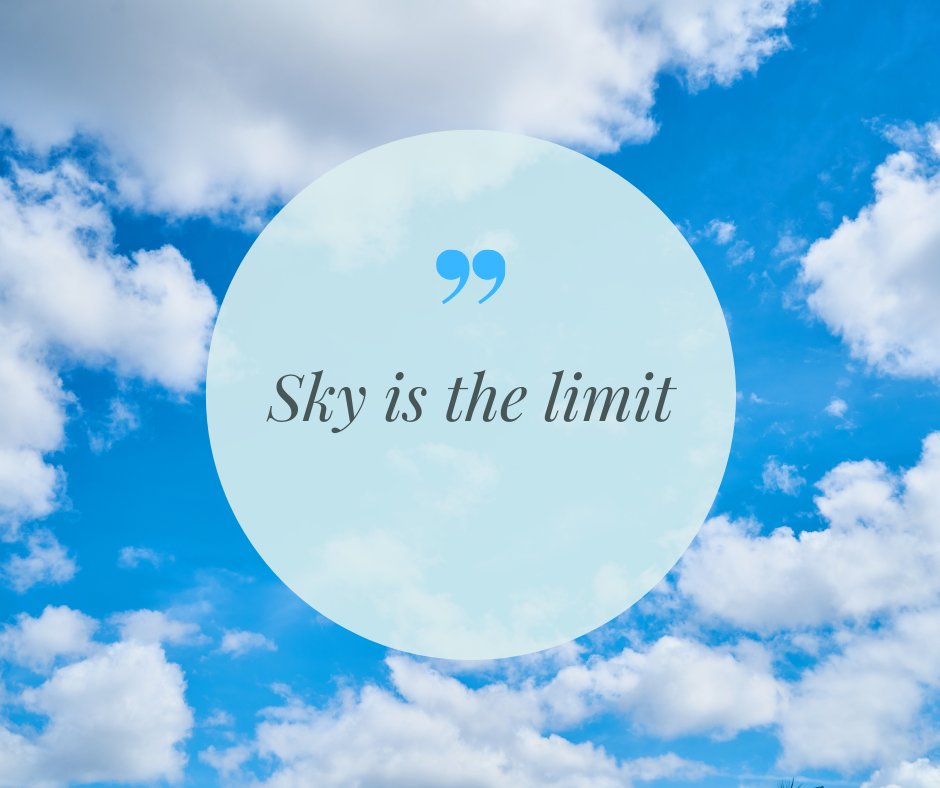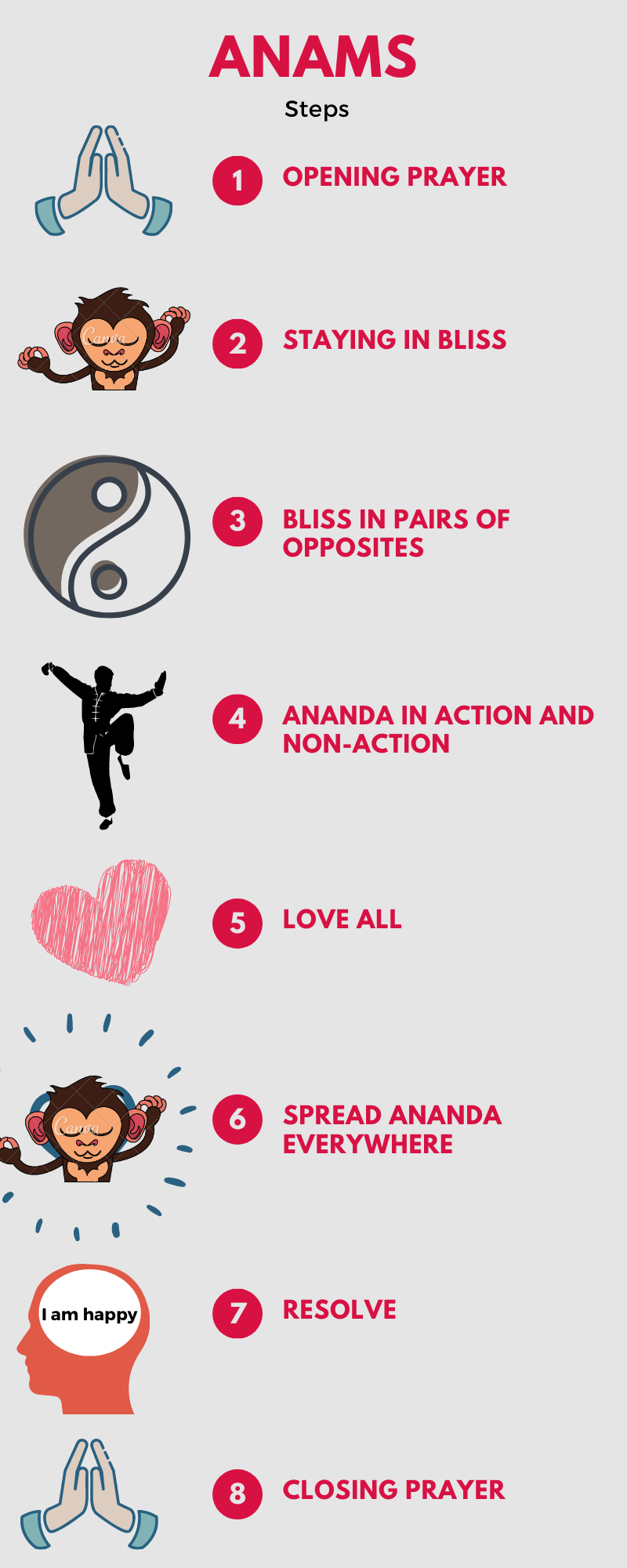How to be Happy?
All of us want to be happy. Almost everything we do is in pursuit of that happiness. This search for happiness is a fundamental drive in all of us.
All of us want to be happy. Almost everything we do is in pursuit of that happiness. This search for happiness is a fundamental drive in all of us.
We chase happiness from object to object, situation to situation but ultimately, we never get satisfied.
Life is an endless cycle of desires and actions to fulfill those desires. We think fulfilling these desires will bring us happiness.
Sky is the limit?

There was a man who was once walking by the side of the road. He had been walking for quite some time, and so he started feeling tired. His legs were aching, he was sweating profusely and there was no respite from the harsh sunshine.
As he continued walking, he saw a man riding a bicycle. He immediately exclaimed “I wish I had a cycle!” At that moment, an angel appeared before him and granted him a cycle.
He was very happy. He rode cycle and continued on his journey. After a while he saw a car and decided he wanted one too. Again, the angel granted his wish.
But the man was still not satisfied. He wished for a bigger car. He could only travel on land with a car. So, he wished for a ship.
After a while, he wasn’t happy with his ship anymore. He now wanted an airplane so he could conquer the skies.
And still he wanted more. He then asked the angel for a rocket so that he could travel to another planet!
You thought “sky is the limit”?
Even sky is not the limit for desires. All of us have desires and we try to fulfill them. We fulfill one, and then another one pops up. This keeps happening again and again and again. It’s impossible to fulfill all of them.
If we can not get what we want, how can we be happy?
Let’s assume we can get whatever we want. Let us assume that our deepest desire is fulfilled. What then?
The man who loved Rasgullas
There was once a man who loved rasgullas. He would think of them all the time in his waking hours and dream of them in his sleep! He was craving the sweet white, fluffy and juicy rasgullas from his favorite store.
One fine morning, he heard that the store was running a promotion and was offering unlimited free sweets for everyone. It was like a dream come true for him! He immediately rushed to the store. It was a struggle clamoring to get past the crowd, a lot of pushing and pulling and finally he got to the front of the line.
He had his first rasgulla and he was on cloud nine. His second one took him to ecstasy. He wanted more of this happiness. He kept eating rasgullas one after another. Before he could realize it, he had already eaten ten. He could not stop himself.
He continued to eat till he had eaten twenty. He started feeling a little full. But this was a golden opportunity that may not come again. So, he had some more.

Thirty rasgullas later, he was completely full. He could not eat anymore. But the server kept offering him more. He forced himself to eat one more. And then another one. By now he was nauseas and miserable.
That same rasgulla which gave him bliss at first bite was now a misery at his thirty second piece! So, can those rasgullas really be the source of his happiness? Ultimately, did it really make him happy?
It was rasgullas for him, it might be gulab jamun for someone else, video games for someone, clothes for someone, alcohol for yet another person. Each of us have our own unique “rasgullas” that we think will give us happiness. But is that true happiness?
We do crazy things in pursuit of happiness, without understanding what happiness actually is.
The happiness that we get from fulfilling our desires is an illusion. It seems far happier in our imagination than in real life.
How to understand the nature of true happiness?
The answer is within you. To uncover the answer to this question, a specially designed yogic technique called ANAMS can help you.
It operates at the most subtle layer of our existence, the anandamaya kosha.
ANAMS
Ananda Amritha Sincana
- Ananda means bliss.
- Amritha means nectar.
- Sincana means sprinkling.
ANAMS means “sprinkle the blissful nectar from the depth of your inner being which is your true nature.”
The Upanishads state that bliss pervades everything. And that’s why everything we do is basically to attain that happiness.
ANAMS is an 8-step practice, which aims to make you realize the true nature of bliss.
Step 1: Opening Prayer
· Sit comfortably in any meditative posture. Vajrasana or sukhasana.
· Start with the prayer.
· This is a verse taken from the taittareeya Upanishad.
आनन्दो ब्रह्मेति व्यजानात्। आनन्दाध्येव खल्विमानि भूतानि जायन्ते। आनन्देन जातानि जीवन्ति। आनन्दं प्रयन्त्यभिसंविशन्तीति।सैषा भार्गवी वारुणी विद्या। परमे व्योमन्प्रतिष्ठिता।स य एवं वेद प्रतितिष्ठति। अन्नवानन्नादो भवति। महान्भवति प्रजया पशुभिर्ब्रह्मवर्चसेन ंअहान् कीर्त्या॥
Brahman is bliss. All beings are born out of bliss. They are sustained by bliss and finally merge into bliss. Nature of that is all pervading skyline.
Step 2: Staying In Bliss
· Slowly stretch your legs out in front of you.
· Lie down on your back in shavasana. Legs apart, hands away from your body, palms facing the roof.
· Try to recall one of the happiest moments in your life.
· Remember the most intimate heartfelt blissful experience that had put you in adeep meditative state. It could be the birth of a child, an achievement at school or workplace, it could be any blissful memory.
· Do not focus on the reason for your joy. Let it go. Just observe your inner feeling of total freedom.
· Feel the deep rest of this silence, the alertful rest, the blissful awareness.
Step 3: Bliss In Pairs Of Opposites
· Your inner bliss must be like the sruti in a music performance. It is always present in the background and it is stable throughout the performance. The singer may modulate his voice, and perform in sync with various accompaniments like tabala, violin etc… but all the while he maintains awareness of sruti.
· The same way we must learn to be aware of the state of inner bliss in ourselves regardless of the external circumstances.
Start remembering a long walk on a sunny day. Imagine yourself walking on a very hot day, sweating away, skin parching with heat, very thirsty, feel like collapsing, but there is no shade nearby, but the inner bliss is not disturbed.
· Now slowly allow your mind to experience a very cold, freezing atmosphere. Your skin has become numb, you can not feel your fingers or toes, but still be aware of your inner bliss. Adhere to the inner feeling of total freedom.
· Allow your mind to start reliving your past experiences. You are the screen on which these experiences are playing like a movie.
· You are not the experiencer, you are an observer. Just watch your past life experiences as if it were a movie. You are the screen. You remain unchanged and unaffected.
Step 4: Ananda In Action And Non-Action
· Just observe the thoughts in your mind.
· Do not react to them.
· Let them just flow…
· Slowly start observing the gap between two thoughts.
· Observe that silence.
· Try to extend the duration of that silence.
· Try to realize the presence of that silence throughout the day in all your activities.
· Whether you are working, cooking, reading, running or just sitting idle, that silence is always there in the background.
Step 5: Love All
· With the force of love one can overcome strong likes and dislikes.
· Good or bad is only in the mind of the perceiver. The world is actually neutral.
· Recall this short story from the Mahabharata:
Dharmaraja and Duryodhana were once tested by their teacher. Dharmaraja was asked to find a bad person and Duryodhana was asked to find a good person. Both of them went all around the world but came back without fulfilling their task.
Dharmaraja with his heart full of love, could not find a bad person. Even in the wicked he could see some good qualities.
Duryodhana on the other hand went on seeing the worst even in the best persons.
Both of them went searching in the same world. This shows that the attitude of the mind changes the world.
· As a person reaches higher stages of personal growth, he extends his love to everyone. He has no enemy.
· His love encompasses all, without expecting anything in return. This is pure and self-less love with understanding and without attachment.
Step 6: Spread Ananda Everywhere
· The ananda or bliss which is obtained by understanding one’s true nature has to be spread everywhere in order to increase the level and degree of experience associated with it.
· As one grows in ananda, he rises above dualities like like or dislike, poverty or affluence, joy or sorrow.
· The real test of this ananda, is interaction with the external world.
· Provide self-less service to people at various levels:
1. Material
2. Mental
3. Emotional
4. Intellectual
5. Spiritual
Step 7: Resolve
· Resolve is a clear, well-formulated, positive thought with minimum number of words.
· Examples:
1. I am ever blissful
2. I am full of energy
3. I am very healthy
· Swami Vivekananda one proclaimed “you are what you think”
· The resolve must be used as a tool for internal change.
· It should be repeated mentally for at least 9 times in one’s own mother-tongue.
Step 8: Closing Prayer
ॐसर्वेभवन्तुसुखिनः
सर्वेसन्तुनिरामयाः ।
सर्वेभद्राणिपश्यन्तु
माकश्चिद्दुःखभाग्भवेत् ।
ॐशान्तिःशान्तिःशान्तिः ॥
Let all be happy; Let all be free from disease; Let all reaise the self; Let none be distressed.
Om Peace Peace Peace!
Key take-away:
1. Everything we do is to obtain happiness.
2. How many ever desires we fulfill; we still do not feel satisfied.
3. Therefore, stop the wild-goose chase for happiness. Find your true happiness within.
4. ANAMS is a specially designed yogic technique that stands for Ananda Amritha Sincana.
Steps:

